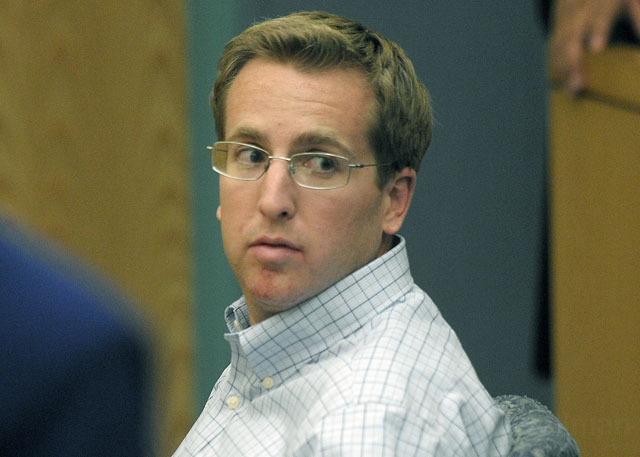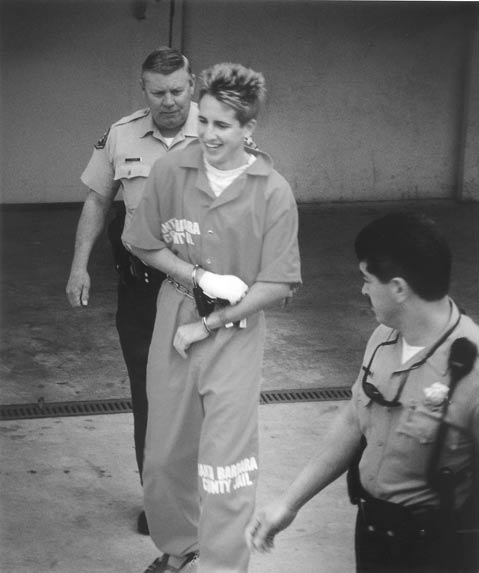Conditional Release for David Attias
Isla Vista Car-Killer to Get Supervised Treatment in Ventura

Santa Barbara Judge Thomas Adams ruled that David Attias — the former UCSB student declared legally insane after plowing his car into a busy Isla Vista street 11 years ago, killing four pedestrians and seriously injuring a fifth — no longer poses a danger to the health and safety of others or himself and should be released from the confines of Patton state mental hospital where he’s been held since 2002.
Instead, Judge Adams granted Attias’s petition to be released to an unlocked outpatient treatment program, supervised by the state’s Forensic Conditional Release Program (CONREP) in Ventura County. In making his ruling, Adams — who presided over the initial trial when a jury found Attias not guilty by reason of insanity — relied heavily upon the testimony of the mental health professionals who’ve worked closely with Attias in the intervening years.
Adams described them as being “four highly educated, well trained, and extremely experienced” individuals. They’d worked with Attias “one-on-one,” he wrote in his ruling, and “had no vested interest in the outcome.” By contrast, the prosecution presented only one expert witness — Dr. Margaret Hagen — whom Adams described as a “well-paid mental health expert” who testified that “she never personally interviewed David Attias, nor had she had occasion to personally meet with any of the treating mental health professionals for Mr. Attias.”

Hagen testified that given Attias’s history, he would always present an unacceptable risk to others and should never be released. But she also expressed widespread doubt about the practice of forensic psychology in general and whether most therapeutic practices can be justified based on the effectiveness of treatment.
Adams said the David Attias he encountered in his courtroom this May was a far cry from the “vacant, troubled, and confused David Attias” of 2001. The judge attributed those changes to the “10 years of intensive therapy and appropriate medications” Attias received while in Patton. Lastly, Judge Adams highlighted the testimony of Dr. John Schipper of CONREP, who expressed confidence he could “safely treat” Attias with “ongoing medications and therapeutic intervention in a closely monitored environment.”
During his 10 years at Patton, Attias had been written up for numerous transgressions, most but not all relatively minor in nature. In one instance, he got seriously beat up after openly flirting with another patient’s girlfriend. In another, he sent a series of sexually explicit letters to the visiting sister of another Patton resident. In that case — which occurred in 2008 — Attias had been egged on to write by the recipient’s sister. The recipient herself testified in May how profoundly upsetting it was to get such letters from someone she’d never met.
At that time, Patton administrators had been strongly inclined to release Attias to a CONREP program. But when the letters became known, they reversed themselves. Since then, however, there were staff changes at Patton, and Attias was placed on new medications. For the past 18 months, staff testified, his behavior, his attitude — once provocative, entitled, and contemptuous — and insight into his violence have improved markedly.
At issue throughout the trial this May was the extent to which Attias will actually be supervised. His defense attorney, Deedrea Edgar, argued that the Ventura CONREP program was one of the best in the state with a maximum of only 21 clients. These, she said, could be drug tested and searched at any time, and could be sent back to Patton or county jail at a moment’s notice if they failed to comply with the terms and conditions established by Dr. Schipper, who would insist Attias — who has a history of psychotropic drug abuse — stay clean and sober, participate in group and personal therapy, and take his medications. Edgar praised the CONREP program, arguing that if such intensely supervised treatment were made more available, many crimes rooted in mental illness could be averted.
But prosecuting attorney Paula Waldman said Attias still poses a threat, adding, “It’s not a matter of if he will ever become violent again, but when.” Throughout the trial, Waldman argued — via cross-examination — that the supervision Attias would get from CONREP was more illusory than real. Once released, she pointed out, he’ll live in an unlocked group home in Oxnard with 57 others — supervised by four — in a neighborhood where drug deals openly take place on the street. To get to therapy, Attias will take a 90-minute bus ride to a treatment facility in Ventura, where — in some cases — group therapy will consist of playing board games.
To the extent Attias learned anything at Patton, Waldman argued, it was to regurgitate the therapy-speak his doctors wanted to hear. And if Attias begins to unravel — “decompensate” — she expressed skepticism that the case managers would have the clinical expertise or length of time on the job to intervene appropriately. Judge Adams addressed these concerns in a broad-brush fashion. “In the event that David Attias falters in his treatment rehabilitation,” he wrote, “he can and will be returned to Patton State Hospital to continue his residency.”



